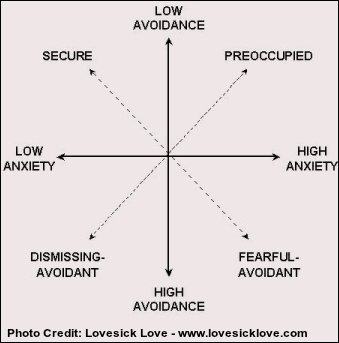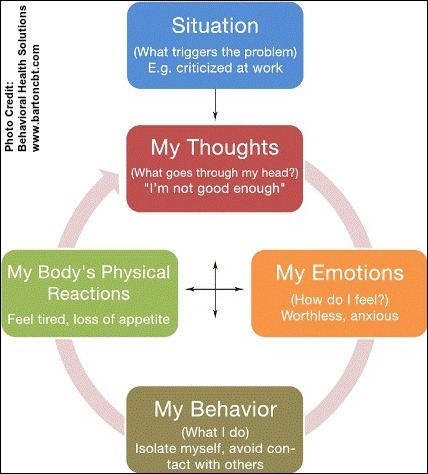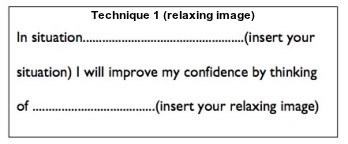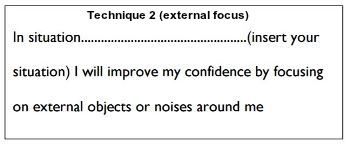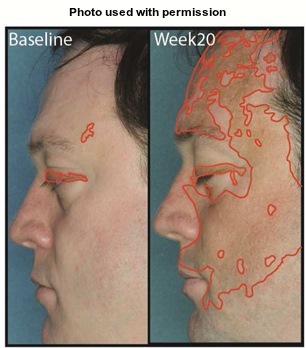| Click Here for Best View |
 |
||||||||||||||||||||||||||
This Newsletter Has Been Generously Sponsored By:
|
||||||||||||||||||||||||||
|
Our article in this issue focuses on recognizing the problems and impediments to a happier life, and learning about modifications you can make to bring positive change. We all have obstacles and problems in our lives, but, as Condoleezza Rice once said:
We hope that after reading the article below you will be inspired to take stock of your emotional baggage and give thought to changes you can make to prepare for a more positive and healthy future. Sincerely,
Vitiligo Coping Mechanisms: Have you ever admired a person for the strength and grace they seem to have in very difficult situations such as a death in the family? Whether they were born with this ability, learned it from their upbringing, or a combination thereof, the people who handle stress in a more positive manner exhibit certain specific coping mechanisms that are different from those who are more negatively affected by stress. Research has found the impact of vitiligo on the quality-of-life for those of all ages to be both profound and far-reaching. The manner in which you adapt to vitiligo can affect not only day-to-day decisions such as the type of clothing you wear, or activities in which you might choose not to participate, but can also even affect the progression of the disease. Because there are no blisters, scales, or rashes, many people deem vitiligo a cosmetic condition. However, if you have vitiligo, you are acutely aware of the less visible, but very significant emotional impact of the disease. Learning about and identifying your personal stress triggers and coping methods can help you to make adjustments to improve your ability to handle stress, and your overall quality of life. Quality of Life Vitiligo not only changes a person’s physical appearance, but many also experience embarrassment, depression, and shame, and refrain from social interaction and events that they once enjoyed. In some areas of the world, vitiligo brings such a stigma as to result in cause for divorce and/or an entire family being shunned in their community. Times of change, such as meeting new people, going to a new school, or even a weather change requiring a different type of clothing, can all be more emotionally challenging for those with a skin condition. Children as young as pre-school age express feelings of being different from others and choose not to play in groups with friends where they had once been quite comfortable. The teen years can also be particularly difficult for those already experiencing physical and hormonal changes while at the same time striving to develop a sense of self-identity. They don’t want to stand out in a crowd for reasons they can’t control. Many adults describe feeling a loss of identity. Their self-concept and body image no longer resemble the person they see in the mirror. Even those who had been quite successful and confidant can take a significant hit to their self-esteem.
Your attachment style is the way you relate to other people. It affects your feelings of security, the way you build relationships, and even how you parent your children. According to science, these styles are established during the first two years of life, and unless (or until) adjusted, stay with you for life. Recognizing your personal attachment style can help you understand your emotional limitations as well as changes you can make to improve problem areas There are Four Attachment Styles, which are based on two factors:
Low Avoidance Example When a stranger openly stares or makes a negative comment, some people choose to stare right back, calling out the person directly and telling them to stop. Others prefer to briefly explain what vitiligo is and that it’s not contagious. While these may seem to be different approaches, both are indicative of a low avoidance attachment style, because they are not avoiding the uncomfortable situation.
To Take a Quiz to Learn More
The manner in which a person copes with difficult situations is in large part a factor of their attachment style. Some people cope with vitiligo by altering their normal behaviors to avoid situations in which their vitiligo shows, such as swimming or going to the gym. Others try to conceal their vitiligo by wearing extra layers of clothing or applying time-consuming, camouflaging makeup. Understanding the various strategies, identifying how you typically respond, and alternative methods you could try could help improve your coping skills, reduce your level of stress, and improve your overall quality of life. A study by the University of Sheffield looked at the social anxiety and coping strategies associated with skin conditions like vitiligo. The authors noted that while concealing vitiligo with clothing or makeup might make things easier in the short-term, the restrictions those choices impose on daily life don’t make them a good long-term solution. This study found that the best long-term coping management styles include a variety of behavioral and cognitive strategies combined with social support.
Some people feel as though everyone around them is staring and judging them, which causes them to become hypervigilant and overly focused on the behavior and attention of other people. With modification, instead of automatically assuming that everyone is staring and judging, they can learn ways to more realistically monitor the level of attention from others to determine if people are actually staring, or just momentarily noticing the difference in their skin, which is normal, then moving on. Another strategy would be to change the way they feel about their vitiligo. This method involves modifying how they personally feel about being different and what they think other people are thinking about them. Seeking social support from those around you such as your spouse, family members, or friends is most typical among those with low avoidance attachment styles. The reassurance received from others can help encourage you to step out of your comfort zone, leading to healthy behavioral changes such as wearing shorts when it’s hot outside, even if it means your vitiligo will show. Social support can also help to change the way you conceptualize your vitiligo. For example, if you accept your friends’ invitations to participate in activities with them, you may begin to feel more comfortable in those situations and think more positively about your vitiligo. In time, this could help you feel more secure participating in other social settings. Cognitive Behavioral Therapy (CBT) Cognitive behavioral therapy (CBT) is a short-term, goal-oriented, therapy that uses a hands-on approach to improve self-esteem and body image. The goal of CBT is to change the thoughts and behaviors that cause problems in your life. If you automatically have negative thoughts about your vitiligo in certain situations, CBT can help you step outside of these thoughts to take on a more realistic perspective.
Let’s say that when you meet a person for the first time, you automatically think that they’re staring at your vitiligo and hoping that you don’t touch them. Through CBT, you would be encouraged to think back to a real-life experience that triggered those thoughts, then discuss constructive coping mechanisms to find positive ways to handle similar situations in the future. Self-Help Interventions Self-help interventions provide patients with a way to receive therapeutic resources and work independently at their own pace. This type of therapy educates the patient about causes of anxiety, and explains methods of cognitive restructuring and relaxation techniques. The University of Sheffield created a 4 stage self-help guide specifically for those with skin conditions to help them learn to identify their personal stress triggers, and provides techniques to reduce their anxieties. Stage 1 examines the different ways social anxiety can affect you, such as by avoiding social activities or events, concealing your vitiligo, feeling nervous or embarrassed, experiencing tension and feelings of panic, and assuming you are being judged. These feelings can cause you to focus on yourself and become self-conscious. Stage 2 helps you learn to monitor the causes of your anxiety so that you can recognize triggers and be prepared to implement self-help techniques. They suggest keeping a log of situations similar to the one below, that make you anxious, and noting your thoughts, emotions, bodily tension, and self-focusing.Stage 3 introduces two relaxation techniques to reduce self-consciousness when feeling anxious about your vitiligo.
This section provides two “if-then” charts
Whether you are young or old, recently diagnosed with vitiligo, or have had it for many years, the uncertainties of living with a progressive, disfiguring skin disease can, at the very least, lead to increased levels of stress and anxiety. If not addressed, the impact can significantly affect your sense of well-being, both short-term and long. Emotional stress is a documented trigger for onset, or worsening of, many autoimmune diseases, including vitiligo. Learning to identify your personal stress triggers, why you react a certain way in difficult situations, and how to make positive changes, can not only help you live a happier and more productive life, but may also help to stabilize your vitiligo. Those who were born with a secure attachment style and have a strong social network are more likely to adjust more easily than those with a high anxiety attachment style and weak social network. However, with time and practice, even those with a less secure attachment style can learn effective coping mechanisms to help modify pre-existing behaviors, gain confidence, and improve their overall quality of life.
The American Academy of Dermatology’s (AAD) Camp Discovery program is for children ages 8-16 who have a chronic skin disease. Under the expert care of dermatologists and nurses, Camp Discovery gives campers the opportunity to spend a week with other young people with skin conditions having fun and participating in activities such as swimming, horseback riding, arts and crafts and many more. There is no fee to attend, all costs including transportation, are provided by the AAD through generous donations from its members, outside organizations and individuals.
Click on the dates below for each camp for specific information about that camp.
Visit www.campdiscovery.org, or Contact Janine Mueller at 847-240-1737, or [email protected]
Calling all Medicare Vitiligo Patients!
Part of the problem is that currently there is no accepted standard for coverage of vitiligo treatments. Each company has their own policies and guidelines, many times based on outdated and incorrect information. What most people may not realize is just how much private insurance coverage can be affected by Medicare policies. Over 55 million Americans are now covered by Medicare or Medicare Advantage, making it the nation’s largest health insurance program. Consequently, many, if not most, insurance providers establish their baseline standards and procedures to follow the Medicare model. We have been in touch with Medicare and have been told that if we can provide a Medicare letter of denial for a vitiligo treatment, then they will try to help us set a standard of coverage. If you are reading this newsletter and you, or someone you know, was denied coverage for a vitiligo treatment by Medicare, please contact VSI immediately. You could help make a difference for future insurance coverage for ALL vitiligo patients! Click Here to Contact VSI
What's On Your Mind? Q. I have been using a topical ointment twice a day for nearly three months and am worried that it is not working. I have not seen any improvement where I am applying the ointment, and I now seem to be losing pigment in other areas. What should I do?
Q. How long should I continue treating an area that has repigmented?
Highlights of recently-published medical A Test to Predict Onset or Worsening of Vitiligo! Unlike many inflammatory skin conditions that begin with redness, bumps, or rashes, by the time vitiligo becomes apparent, disease progression has likely been underway for several months. Tests that could confirm active disease prior to visible signs, as well as predict the likelihood of future disease progression, would allow for an earlier start of treatment and better management of the disease. A recent study conducted at the Ghent University Hospital Department of Dermatology, in Ghent, Belgium looked at two specific biomarkers associated with other autoimmune disorders connected to vitiligo to determine if they could help predict vitiligo activity and progression:
The study looked at 93 patients with vitiligo who were either not treating their vitiligo or were using topical therapies such as corticosteroids, tacrolimus, and/or pimecrolimus. Each participant completed a survey to describe whether their vitiligo was active (spreading), stable (no activity), or repigmenting, during the previous 3, 6, or 12 months. After looking at the surveys and examining the patients, the doctors placed the participants into one of three categories:
Blood levels were tested for the sCD27 and sCD25 biomarkers. The discovery of these findings is very encouraging and the biomarker research continues with the hope of providing better diagnostic and treatment tools for the future.
Another Drug Shows Promise for Vitiligo Last year VSI reported on a drug in the news called tofacitinib (Xeljanz) that provided very remarkable repigmentation in a case study. This medication, known as a janus kinase (JAK) inhibitor, works by inhibiting the activity of the signaling pathways that cause or trigger certain diseases. Researchers have for several years been closing in on the biological pathways that could turn off the immune response that causes vitiligo. However, as previously noted, caution must be exercised when turning off vitiligo’s immune response to melanocytes due to the risk of removing the body’s ability to recognize the cells that cause melanoma, which from a health standpoint would be a far worse diagnosis. The good news is, vitiligo research is moving at a record pace, and researchers are zeroing in on the specific pathways involved with vitiligo, as well as the drugs that target those specific signals. By using a targeted treatment rather than turning off the entire immune system, which can have significant side effects, the treatment targets only very specific areas (or pathways), leaving the rest of the immune system alone to do its job. Ruxolitinib (Jakafi), another JAK inhibitor already on the market for other conditions, has been studied in a topical cream for psoriasis and rheumatoid arthritis, showing positive results with very few (mild) side effects. In 2016, Dr. John Harris (University of Massachusetts Medical School, Department of Dermatology), reported a case study of a patient he was treating for alopecia areata (AA), who also happened to have vitiligo. This patient was treating with ruxolitinib 20 mg orally twice a day for twenty weeks. After 4 weeks, his AA began responding to the treatment, and after 12 weeks, he began regaining pigment on his face. At the conclusion of the study (20 weeks), he had regained 51% of his facial pigmentation, compared to only 8% when the study began.
At a 12 week follow-up visit, while he maintained his hair regrowth, he had unfortunately lost quite a bit of his new pigment. In June 2016, Tufts Medical Center conducted an Open Label Phase 2 Proof-of-Concept Pilot Trial for vitiligo, using a topical form of ruxolitinib. This is significant, because topical medications can be applied directly to the affected areas, reducing the overall systemic absorption and side-effects. This type of treatment could potentially be used for a longer period of time, producing more sustainable results. Sign up for Ruxolitinib Clinical Trial! Another vitiligo study with topical ruxolitinib is scheduled to begin in the coming weeks and will be recruiting participants. VSI will make the information available once it has been released. Keep an eye on both our Community Page News and Updates and on our Facebook Page. To see previous article on Tofacitinib: Click Here
Online Vitiligo "Selfie" Study!
Vitiligo Research Study in New York City.
NEW! - Support VSI Through Ebay
Earn Funding for VSI 3 Ways When You Shop! Your Online Shopping Can Benefit VSI!
|
|||||||||||||||||||||||||
| Copyright © 2017 Vitiligo Support International Inc. All rights reserved. Reproduction or republication strictly prohibited without prior written permission A Vitiligo Support International, Inc. financial statement is available upon written request from the Virginia Office of Consumer Affairs. Mail requests to: Virginia Department of Agriculture and Consumer Services, Office of Consumer Affairs, P.O. Box 1163, Richmond, Virginia 23218. Unsubscribe from the original email |
||||||||||||||||||||||||||

 Spring is a time of hope, change, and new beginnings. Spring cleaning can help get rid of the clutter in your home and make room for things fresh and new. Why not also make spring a time to evaluate the inventory of your emotional house? Don’t be afraid to look into the baggage and dark corners. Throw away the dusty, negative thoughts that are weighing you down, and open the door to positive energy!
Spring is a time of hope, change, and new beginnings. Spring cleaning can help get rid of the clutter in your home and make room for things fresh and new. Why not also make spring a time to evaluate the inventory of your emotional house? Don’t be afraid to look into the baggage and dark corners. Throw away the dusty, negative thoughts that are weighing you down, and open the door to positive energy!


